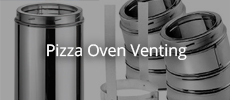RandyJ I picked up one of those cheap plastic mixing tubs (~$10) at HD for to mix small amount of concrete. It was just the ticket for the Perlite render. david s is on target about the hydration, but the Pertlite in the kit is treated with silicone so it doesn't absorb water (or absorbs it less). Not sure if it handles mechanical mixing any better, but is was fine mixing with a hoe.
Great pic of the oven "resident", Happy Father's Day!
X
-
Hey david s this is the recommended process from the directions. It is a 2" layer done in roughly 3 layers. The recommended timing for the drying fires is to wait at least 2 days after I finish the 3rd layer. Then I can start the drying fire's.
Do you think I am being to rough with the drill and mixer? I wanted to make sure I was getting everything fully mixed and incorporated. I can get a new mixing tub if you think that is best. My wheel borrow has seen better days and is covered in a rough layers of cement and would be hard to get a even mix.
Randy
Leave a comment:
-
I’m not sure how thick your recommended perlcrete layer is, but any mix containing either perlite or vermiculite is drastically weakened by its addition. As well as the mix requiring about double the water quantity because the grains soak up so much water. As only a small proportion of the water required in the hydration process it leaves a large amount to be purged. Also perlite and vermiculite grains, being quite weak, will degrade somewhat by mechanical mixers, especially if mixing is extended too much. The recommendation is to fold in gently, preferably by hand (barrow and spade) to avoid the grains being abraded too much. However you should follow the manufacturers instructions. There maybe reasons why the build is done this way. At what stage are drying fires recommended?Last edited by david s; 06-14-2024, 09:31 PM.
Leave a comment:
-
Today I started on the render coat. The mix is 5,1,1,1 and that is pearllite, Portland cement, Lime,and sand. The first batch i did was a bit to dry and just didn't want to hold together. After that i managed to find roughly the right hydration level. I am using a cordless drill with a mortar mixer to blend the mixture and once it would stick to the upper sides of the 5 gallon bucket it seemed to be about right. It took me about 3ish hours to figure out what i was doing and get this first coat on. It would have sped things up tremendously if I had someone else making up the premix buckets for me. I was using a 20 oz solo cup as my measuring cup. And 10 pearllite scoops seemed like a good volume for the drill to mix. Unfortunately that amount doesn't go super far. Once I had the hang of it then it went well. It was kinda like frosting a cake.
Randy
Leave a comment:
-
Well, RandyJ you could have done it the way I did it, or the way a professional would Nice Job!
Nice Job!
- Likes 1
Leave a comment:
-
UtahBeehiver yes it will have a breather valve or eventually be just plugged. I had those parts just sitting on my cart so I grabbed them before I came home yesterday. i figured that the galvanized steel would be just fine. And rust should not be a issue as this fitting is used outside in concrete all the time.
Randy
Leave a comment:
-
That will work as long as you put the breather cap on top and this is not an open end. I forget you are a commercial electrician and have all access to all the conduit fittings.
Leave a comment:
-
Hey Giovanni Rossi I made up a adapter. What do you think of this. Any reason a all steel set up will be a problem?
Leave a comment:
-
When filling the pinholes either sift out the course sand and just use a 3:1 mix sand and cement only, colour as you wish, or use a tile grout with a bit more cement in it. I never go down to 3000, I think 800 is plenty, but see how you go and how it looks.
Leave a comment:
-
Sorry RandyJ , I forgot what I did until I blew up the photo. I had purchased different fittings before I got to that stage because I wasn't sure what I was going to need. Once I realized I needed only about 2" to get through the final thickness of pericrete layers. I believe I ended up using 2 fittings, 1 female/female and 1 male/male to get close to the right height. It worked out well because I was able to snip out a little of that hardware cloth just enough to allow the male end to "thread" into the cloth. Once the cloth was tied to the chicken wire, everything held in place nicely while I troweled on the pericrete. The bottom fitting was snug against the blanket, ensuring a clear pathway for any moisture/steam.
Leave a comment:
-
Giovanni Rossi thank you for sharing what you got with me. I just ordered it. I will have to swing through the depot and get a female adapter to do what you did as well. Then I can start the rendering.
david s I appreciate the comments. I am actually pretty surprised how flat it is turning out. There are a few big pock marks that i need to fill in. I am tempted to mix a bit of portland with sand and pigment to fill them in. Should i add some lime in as well or not necessary. I was thinking like 1,1,1 or would more sand be better?
I am guessing that I will need to do another 2 or 3 hrs of grinding to get everything how I want but it is turning out nicely. I also assembled my wet polisher today so I am excited to see how that works. I am having high hopes that it will turn out nicely and I am excited to see how polished I can get it. Not sure how far I should go. It came with up to 3000 grit.
Randy
Leave a comment:
-
Your polishing looks pretty good. If you look really carefully it will probably have lots of tiny pinholes. These are usually filled after polishing down to about #200, wait 48 hrs then polish them out again. Wetting the countertop will reveal how flat you’ve been able to get the surface. A stone sealer painted over the surface will seal it up and retain the wet look and amaze your friends.
Leave a comment:
-
Randy,
Used this one from Amazon.
Buyers Products HBF12P DC Hydraulic Power Unit 3/4 Inch Poly Breather Cap, Free Flow Ventilator for Reservoir, Oil-Resistant, 3/4 NPT
Added a short piece of PVC and fitting to complete the assembly.3 Photos
Leave a comment:
-
You should follow the manufacturer’s advice, but many builders have had problems, including me many years ago, when I cracked the outer shell when trying to dry out an ovebefore renderingn after applying the render. I now always chase out the moisture from the inner dome and insulation layers before rendering because they will lose moisture far easier if the fires are done after insulating, but before the application of the outer render. Once all the carbon has been burnt off the inside, usually the 7 fires in 7 days method, the outer render can be safely applied and to retain moisture in the outer to enhance its strength it should be sealed up. I use clingwrap for this operation, leave it for a week before unwrapping it.Last edited by david s; 06-12-2024, 12:08 AM.
Leave a comment:
-
david s thanks for the advice. After you suggested the grinder i went to you tube and watched a few videos. I then remembered that i had a 4.5 or 5" diamond cup wheel. After a bit of digging around i found it and went to town on the tops. I am sure a larger one would be a bit faster but this is working rather well. I spent a few hours this afternoon messing around with the grinder and got quite a bit of the aggregate exposed. There are a few spots that are more salt and pepper but the look over all is comming together nicely. I think I want to have a mixture of both so it has a nice rustic look. The wet polisher just showed up a few minutes ago so I will have to look at it tomorrow and maybe try it out.
I also got the chimney adapter cut to fit as well. I have not secured it yet but but it fits nicely. It has been raining a lot lately and is supposed to rain again tomorrow. This is making it hard to keep making progress. Fortunately all i have left to do before curing iS to render the dome. I am hoping to do that later this week.
Question. What is everyone using for the vent to keep the render from holding in water vapor.
Leave a comment:





Leave a comment: